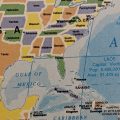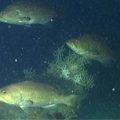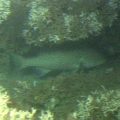Coney Grouper is a species of marine ray-finned fish classified under groupers, a group of fish belonging to the family Serranidae and subfamily Epinephelinae. The scientific name of the Coney Grouper is Cephalopholis fulva. It is also known as the butterfish or the Graysby grouper. They are one of the ten grouper species in the shallow-water grouper complex.
This fish is often used as a quarry species in commercial and recreational fisheries and is a more common sight in the aquarium trade than other groupers. In this article, we will go in-depth about various information related to coney grouper.
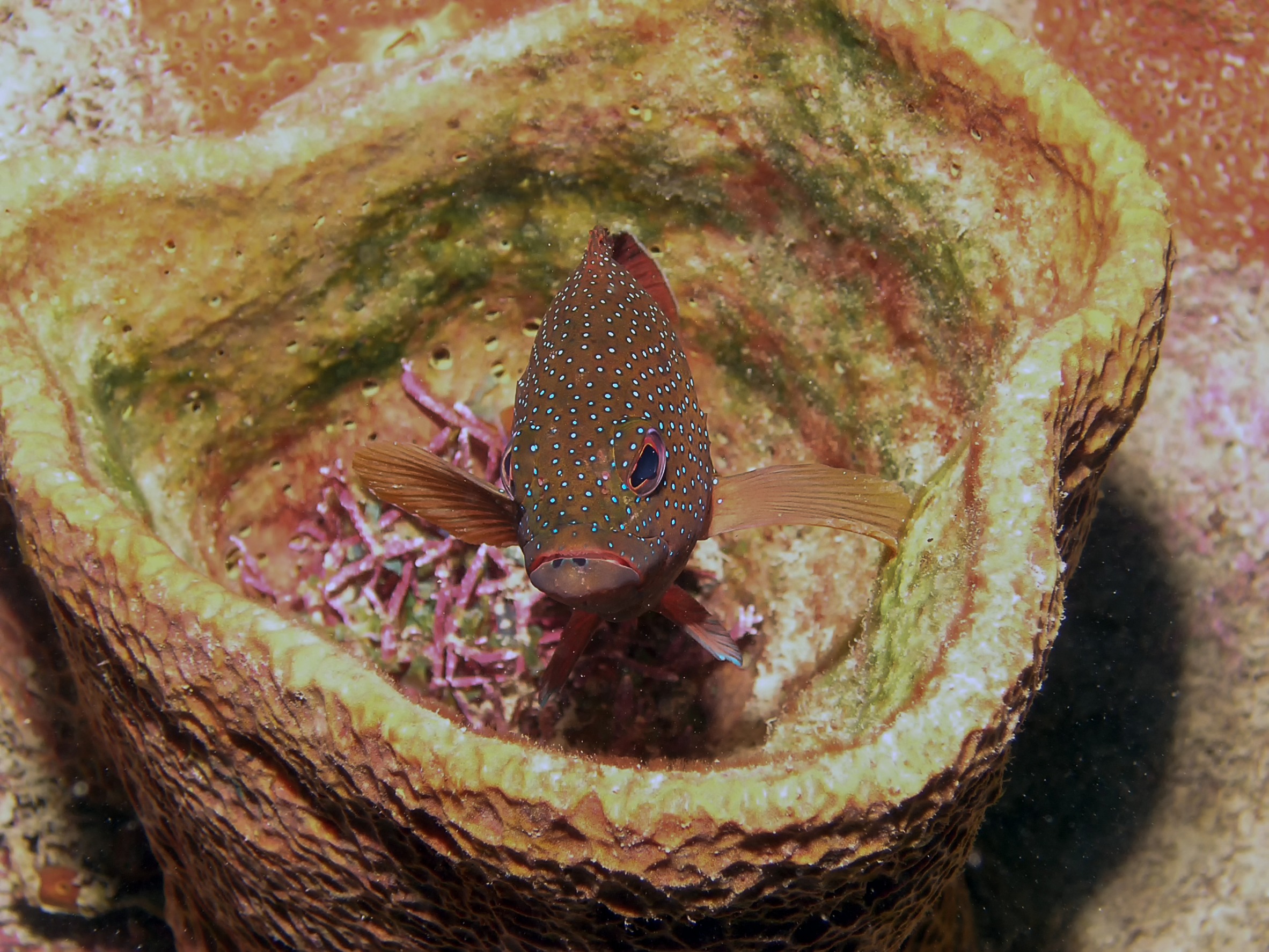
Coney Grouper Physical Characteristics
Like all other groupers, the Coney grouper has a robust, reasonably large, and stout body. The body’s shape resembles an oblong, and their snout is longer than the diameter of their eyes. These eyes, which sit above their pointed noses, are large, round, and quite prominent, with a piercing gaze that’s easily noticeable.
The lateral line of their body consists of 45–54 scales. There are nine spines in the dorsal fin and three in the anal fin, while there are 14–15 soft rays in the former and nine in the latter. Between the spines of the dorsal fin, there are some visible deep notches. As for the caudal fin, it is usually convex with angles at the corners.
The dorsal profile of Coneys is flat and convex between the eyes. The posterior end of their upper jaw is visible when the mouth is closed, which looks like a bony knob from the outside. The closed mouth typically reaches beyond the margin at the back of the eye, a distinct characteristic of coneys. They have a rounded preopercle, which is a flat bone lying in front of the opercle and does not have any spines or notches.
Coney Grouper Appearance and Coloration
Coney groupers are popular in the aquarium trade precisely because of their vibrant coloration and wide range of appearances throughout their lifetime. They can be easily distinguished from the other groupers because they show incredibly bright and beautiful colors for most of their lives.
Juvenile coney groupers usually make two appearances. Either they are bicolored, or they have a uniformly golden body. In both cases, they have one white spot in the middle of the back, four black ones on the lower lip, and two more white ones on the upper base of the caudal fin.
This species shows three color phases throughout its life. The first is a red phase found in deep waters. The intermediate one is a shallow water orange-brown phase, and the final one is a xanthic or yellow phase located in shallow to deep water.
In the second phase, which is bicolored, the typical red or brownish-orange color moves over a border and runs from the tip of the snout to the rear rays of the dorsal fin. Below the line, the color gradient begins to pale down. A pattern of small bluish spots with dark margins covering the head and body is visible in this fish’s red and bicolored morphs.
As for the yellow morph, which is the third color phase, those blue spots are seen only in the head and the anterior part of the body, significantly reducing in number as well. However, in all three-color phases, you can see two small black spots on the caudal peduncle and two more at the top of the lower jaw. These spots are another critical characteristic of grouper fish.
An interesting fact about coneys is that their coloration changes depending on their mood and the surrounding light. For example, the bicolored pattern shown in the second phase is shown when the fish is excited, as it can switch the appearance on and off within a few seconds. Again, when it’s nighttime, these fish adopt a pale coloration with asymmetrical vertical bars and a dark forked line between the eyes.
The appearance also changes a little during the breeding season. When breeding, the male Coney grouper will show a horizontal dark brown band running down from the lower end of the pectoral fin’s base to the tip of the caudal fin. They will also have a black margin leading to the soft-rayed part of the dorsal fin, a dark stripe running across their eye, and a white spot near the center of the dorsal fin’s base.
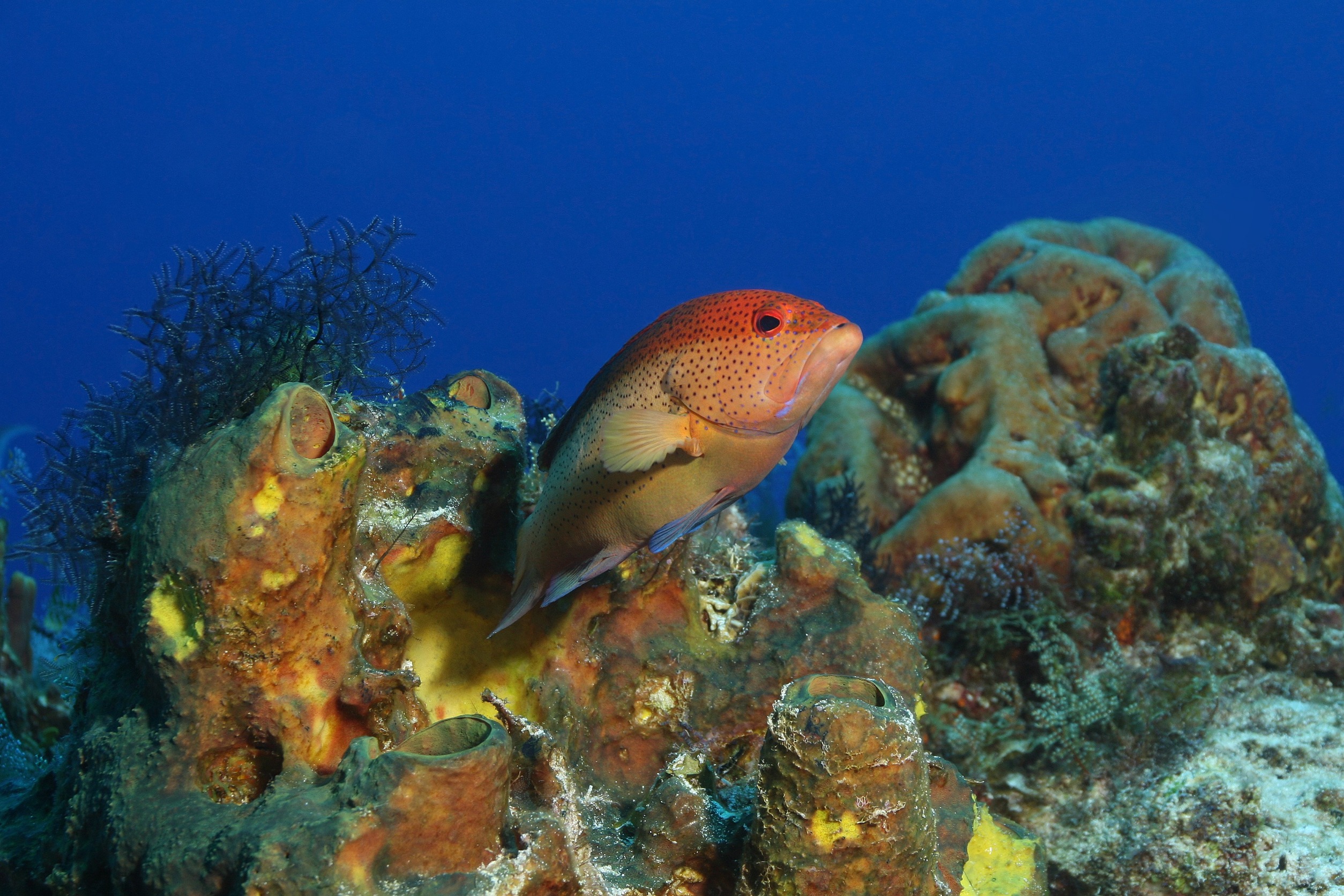
Coney Grouper Habitat and Distribution
Coney grouper’s primary distribution lies in the western Atlantic Ocean, Florida, the Gulf of Mexico, and the Caribbean Sea.
Around the western Atlantic, they are in areas from South Carolina and Bermuda to the Bahamas. From there, their distribution stretches to the Gulf of Mexico. To the west of the gulf, it is found from Tuxpan in Mexico, south along the coast of the northern Yucatan Peninsula, and off northwestern Cuba. In the Gulf of Mexico, they are found in Florida, starting from the Florida Keys to as far north as Cedar Key and the Flower Garden Banks.
Coney groupers also occur throughout the Caribbean Sea, along the northern coast of South America to southern Brazil. But no population has been detected in the region of the Amazon Delta between the two. Fernando de Noronha Archipelago, St. Paul’s Rocks, and Trindade Island are more places where these species are located.
Like most species of groupers, they like to inhabit coral reefs, rocks, and coral heads. They also hang around in the clear water at depths of 1 to 70 meters. During the daytime, they are seen inside caves, under ledges, or around shipwrecks. At night, they come out of their shelters to find food.
Coney Grouper Diet
Coney groupers are bottom feeders. They feed mainly on small fish like Cantherhines pullus, Monacanthus tuckeri, Sphoeroides sp.,Aulostomus maculatus, and Acanthurus sp. They also feed on crustaceans like shrimp and crabs. They are often seen following moray or shrimp eels so that they can eat the prey flushed from the reef.
The largemouths of coney groupers come in handy a lot during feeding. They can open their mouth wide and suck in the prey whole by displacing the water rapidly rather than biting them with teeth. They can also use their mouths to dig into the sand to find food.
Coney Grouper Size and Lifespan
The maximum reported length of a Coney grouper is 44cm, which is relatively short compared to many other grouper species, especially the Goliath grouper. The average range of sizes is only around 14.7 to 24.5 centimeters.
Coneys grow quickly early in life, and the growth rate slows significantly later. 60% of their ultimate maximum size is gained in the first year of their lives. For the next 3 to 4 years, they slowly reach the remaining 40%, after which the growth is usually complete.
The average lifespan of a Coney grouper is 12–15 years. They tend to grow quickly and live shorter lives. The coney grouper with the longest reported lifespan was recorded in Bermuda, aged 28 years. Bermuda coneys grow the slowest, which is why they can live longer. Those living in Brazil’s waters also grow slowly; hence the record there is 25 years.
Coney Grouper Reproduction
The Coney Grouper shows reproductive habits similar to those of other groupers. The breeding season’s period can vary depending on the location. In central Brazil, the time is ten months, while other areas show a comparatively smaller period.
For example, in the Abrolhos Bank of Brazil, the breeding season starts in July and ends the next month in August. Whereas in Pernambuco, it runs from August to October. In Fernando de Noronha, spawning occurs between July and August but may extend into September. Again, in Bermuda, spawning has been recorded from May to July. The average period is around two months.
Coney groupers are protogynous hermaphrodites, so the females can change sex to become males after gaining sexual maturity. They reach sexual maturity at roughly 16 centimeters, or 6.3 inches, in length and start changing sex at 20 centimeters, or 7.9 inches, in size. Usually, they attain sexual maturity around the age of four.
Male coney groupers are territorial. They harbor a harem of females and guard them. Usually, spawning occurs just before sunset and continues for several days at a stretch. In spawning, a few numbers of male fish and a large number of female fish particulate together. A male will spawn daily with each of the several females in the harem he made during this time.
A single female grouper lays an estimated 150,000 to 282,000 eggs. These eggs are around 0.95 mm in diameter and have a single oil globule. The larval period is reportedly more extended than most fish, allowing the effective and long-range dispersal of young.
Can You Eat Coney Grouper?
Coney grouper is edible, and it’s delicious too. Coney groupers have firm white meat with mild and slightly sweet flavors that can be seasoned according to your wishes. It can adapt to various cooking styles, so the freedom is all yours. The Gulf coney has a sweeter taste than the Atlantic one, but both can be eaten if cooked properly.
However, eating grouper meat is generally discouraged. A few servings won’t harm you, but if you’re consuming them regularly, they might pose serious health risks. This is because the body of groupers contains high levels of mercury, which is not affected even after cooking. Consuming them in high amounts can lead to mercury poisoning. It’s best to limit eating grouper to the occasional vacation meal.
Can You Fish Coney Grouper?
You can fish for Coney Grouper if you stay within the limit. The coney grouper population is not under threat, far from it, but since they have high commercial value, limitations are imposed on fishing for them.
The season is closed in Florida, North Carolina, Georgia, and South Carolina from January 1 to April 30. During this time, fishing for this species is closed for harvest in federal waters. In the Gulf of Mexico, however, the fishery is open year-round.
Coney Grouper Catch Limits in Florida
The limits imposed on the catching of coney are the same in all places. The aggregate limit is 3, and the bag limit is also 3. Anglers may harvest up to 3 coney groupers as part of the three-grouper aggregate limit in Atlantic Federal waters. There is no minimum size limit imposed. However, there are some criteria to be met:
-
- Your federally permitted charter or headboard must have the 2019 version of the NMFS document titled “Careful Release Protocols for Sea Turtle Release with Minimal Injury”; an electronic copy is allowed.
-
- You must have the NMFS sea turtle handling and release guidelines placard.
-
- You must also have the required release and handling gear. The allowed equipment is a vertical hook-and-line.
-
- It is required for you to use the dehooking tool.
-
- You must use non stainless-steel hooks when using hook-and-line gear with natural baits.
-
- A descending device is required on board, and all vessels in it must be readily available for use, attached to at least 16 ounces of weight and at least 60 feet of line.
Coney groupers are a species of beautiful fish that display exciting patterns in their various colorations. They are good to eat and fun to fish for. Compared to some of the other grouper species, it is better to fish for Coney grouper, which can reproduce in large numbers and keep its population high.

